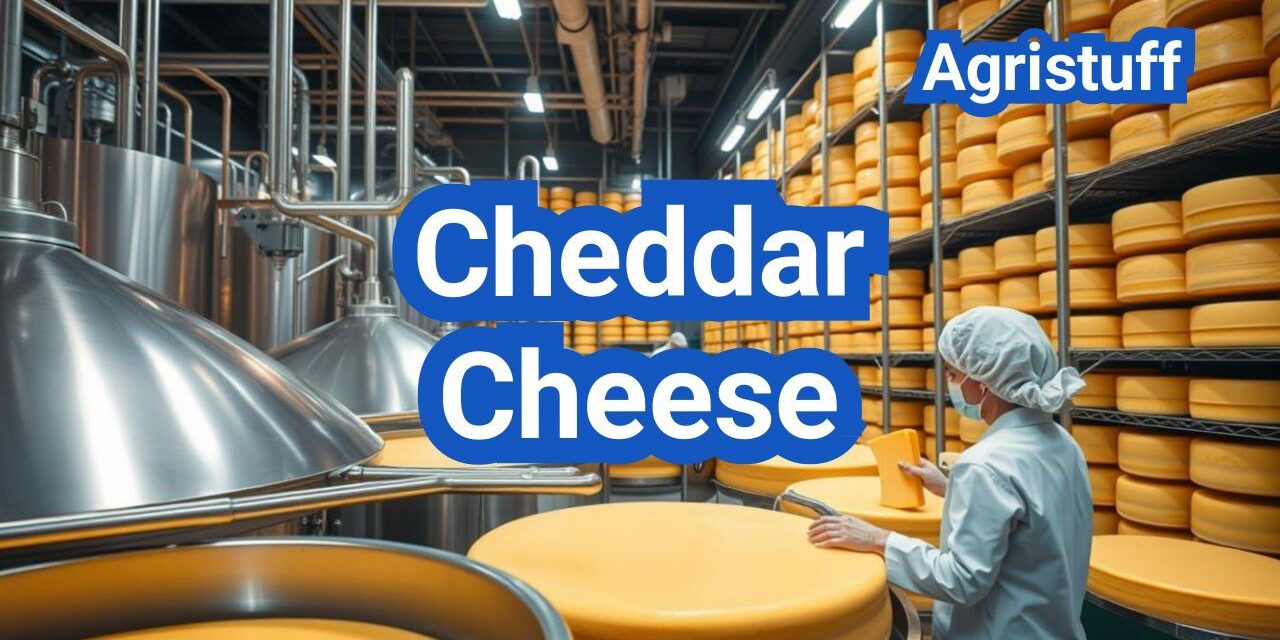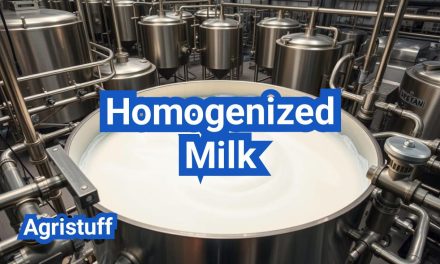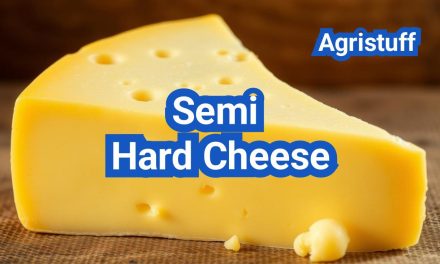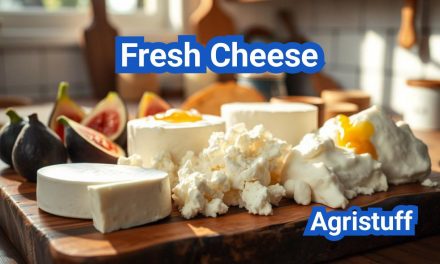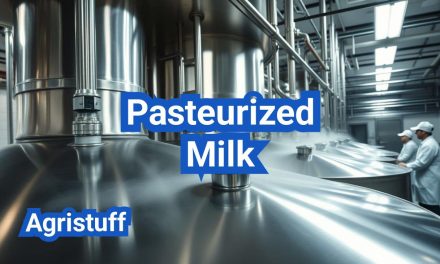Cheddar is a popular variety known for its rich flavor and versatility in cooking.
The aging process significantly affects its taste and texture, making it a favorite among cheese enthusiasts.
The journey of cheddar cheese from production to the consumer involves several key steps, including processing, aging, and packaging.
Understanding these aspects can help appreciate the craftsmanship behind this beloved dairy product.
Key Takeaways
- Cheddar cheese is known for its rich flavor and versatility.
- The aging process affects its taste and texture.
- Understanding cheddar cheese processing enhances appreciation.
- Cheddar cheese is used in various culinary applications.
- The meltability of cheddar cheese makes it popular.
The Origins and History of Cheddar Cheese
With a history spanning over 800 years, cheddar cheese originated in the English village of Cheddar, Somerset. This rich history is deeply intertwined with the traditional practices of the region.
From Somerset to the World: Cheddar’s Birthplace
The village of Cheddar in Somerset, England, is renowned as the birthplace of cheddar cheese. The unique characteristics of the local milk, combined with the region’s caves that provided natural refrigeration, made it an ideal location for cheese production.
As trade and colonization expanded, cheddar cheese spread to various parts of the world, adapting to local tastes while retaining its traditional essence.
“Cheddar cheese has become a staple in many cuisines around the world, yet its roots remain firmly planted in Somerset.”
The Cheddar Cheese Association
Traditional vs. Modern Cheddar Production
Traditional cheddar production involves a meticulous process that includes curdling, cheddaring, and aging. This method is still practiced today by artisanal producers who value the unique flavor and texture it imparts.
In contrast, modern cheddar production has adopted more efficient techniques, such as mechanized cheddaring and controlled aging environments, to produce a consistent product on a larger scale.
| Production Aspect | Traditional Method | Modern Method |
|---|---|---|
| Curdling Process | Manual, using traditional rennet | Mechanized, with microbial rennet |
| Cheddaring | Done by hand, with careful monitoring | Mechanized for efficiency |
| Aging | Aged in natural caves or cellars | Controlled environment for consistency |
The evolution of cheddar production has resulted in a diverse range of products, from authentic farmhouse cheddar to mass-produced varieties.
What is Cheddar Cheese? Defining Characteristics
Understanding what constitutes cheddar cheese involves exploring its defining characteristics and production methods. Cheddar cheese is a type of hard cow milk cheese known for its rich flavor profile and firm texture, characteristics that have made it a staple in many cuisines around the world.
Key Attributes of Authentic Cheddar
Authentic cheddar cheese is distinguished by several key attributes. First and foremost, it is made from cow’s milk, and its production involves a meticulous process that includes curdling, cheddaring, and aging. The cheddaring process, which involves stacking and turning blocks of curd, is particularly significant as it contributes to the cheese’s characteristic texture and flavor development.
Another important attribute is the aging process. The age of cheddar can significantly impact its flavor, ranging from mild and creamy in younger cheddars to sharp and complex in aged varieties. This versatility makes cheddar suitable for a wide range of culinary applications.
Protected Designation of Origin: West Country Farmhouse Cheddar
West Country Farmhouse Cheddar holds a Protected Designation of Origin (PDO) status within the European Union. This designation signifies that to be labeled as West Country Farmhouse Cheddar, the cheese must be produced within a specific geographic area (the counties of Somerset, Devon, Dorset, and Gloucestershire) using traditional methods.
The PDO status ensures that the production of West Country Farmhouse Cheddar adheres to strict guidelines, including the use of local cow’s milk and adherence to traditional production techniques. This not only protects the heritage of the cheese but also assures consumers of its authenticity and quality.
The Complete Cheddar Cheese Making Process

From milk selection to the aging process, the making of cheddar cheese is a multifaceted endeavor that requires precision, patience, and a deep understanding of the craft.
Step1: Milk Selection and Preparation
The journey of crafting cheddar cheese begins with the selection of high-quality milk. Dairy farmers typically use cow’s milk, with the breed of cow influencing the flavor profile of the cheese. The milk is then pasteurized to eliminate harmful bacteria while preserving the natural flora that contributes to the cheese’s character.
The milk is subsequently mixed with a starter culture that contains bacteria such as Lactococcus lactis subsp. lactis and Lactococcus lactis subsp. cremoris. These bacteria convert the milk sugar (lactose) into lactic acid, lowering the pH and beginning the cheese-making process.
Step2: The Cheddaring Process Explained
The cheddaring process is a critical step that distinguishes cheddar from other cheeses. After the curds have formed, they are cut into small pieces to release whey. The curds are then stirred and cooked until they reach the desired acidity level.
The curds are subsequently stacked and turned, a process known as “cheddaring,” which involves cutting the curds into blocks, turning them, and stacking them on top of each other. This process expels more whey, develops the texture of the cheese, and contributes to its characteristic flavor.
Step3: Pressing and Initial Aging
After cheddaring, the curds are milled into smaller pieces and salted. The salt not only enhances the flavor but also acts as a preservative. The curds are then pressed into molds to form wheels or blocks of cheese.
The pressing process is crucial as it removes any remaining whey and gives the cheese its final shape. The initial aging process begins after pressing, during which the cheese is stored in a controlled environment. The temperature and humidity are carefully managed to allow the cheese to mature gradually, developing its flavor and texture.
Throughout the aging process, the cheese is regularly turned to ensure even development. The length of the aging process can vary significantly, from a few months for mild cheddar to several years for more complex, aged varieties.
Understanding Cheddar Cheese Aging Levels
The aging process is a critical factor in determining the flavor and texture of Cheddar cheese. Cheddar cheese aging levels range from mild to vintage, with each stage offering distinct flavor profiles and textures.
Mild Cheddar (2-3 Months): Flavor Profile and Uses
Mild Cheddar is aged for a relatively short period, typically between 2 to 3 months. This brief aging process results in a mild, creamy flavor and a smooth texture, making it ideal for snacking, sandwiches, and cooking applications where a subtle cheese flavor is desired.
Medium/Sharp Cheddar (3-6 Months): Flavor Development
As Cheddar ages beyond the mild stage, it develops a more pronounced flavor. Medium and Sharp Cheddar, aged between 3 to 6 months, offer a balanced taste with notes of tanginess and a slightly firmer texture. These varieties are versatile and can be used in a variety of dishes, from macaroni and cheese to grilled cheese sandwiches.
Extra Sharp Cheddar (9+ Months): Complex Flavors
Extra Sharp Cheddar is aged for 9 months or more, resulting in a robust, complex flavor profile. The aging process concentrates the flavors, producing a tangy, sometimes crumbly cheese that’s perfect for those who enjoy a stronger Cheddar taste. It’s often used grated or sliced thinly for added flavor in recipes.
Vintage/Aged Cheddar (12+ Months): Crystallization and Intensity
Vintage or Aged Cheddar, aged for over a year, represents the pinnacle of Cheddar aging. These cheeses develop crystals of calcium lactate, which contribute to their characteristic crunch and intense flavor. Vintage Cheddar is often served on its own or paired with fruits and nuts to balance its robust taste.
| Aging Level | Flavor Profile | Texture | Best Uses |
|---|---|---|---|
| Mild (2-3 Months) | Mild, creamy | Smooth | Snacking, sandwiches, cooking |
| Medium/Sharp (3-6 Months) | Balanced, tangy | Slightly firmer | Mac and cheese, grilled cheese |
| Extra Sharp (9+ Months) | Robust, complex | Crumbly | Grate, add flavor to recipes |
| Vintage/Aged (12+ Months) | Intensely flavored | Crunchy crystals | Serve alone, pair with fruits/nuts |
Understanding the different aging levels of Cheddar cheese can help consumers choose the right variety for their needs, whether they’re looking for a mild flavor for a family meal or a robust taste for a special occasion.
White vs. Orange Cheddar: What’s the Difference?

The distinction between white and orange cheddar cheese has long been a topic of interest among cheese enthusiasts. While both types share similar taste profiles, their color variation sparks curiosity and raises questions about the source of this difference.
The Annatto Coloring Tradition
The primary reason for the color difference between white and orange cheddar is the use of annatto, a natural coloring derived from the seeds of the achiote tree. Annatto has been used for centuries to impart a yellow or orange hue to cheeses, including cheddar. The tradition of using annatto originated as a way to standardize the color of cheese, which could otherwise vary significantly due to differences in the diet of the cows.
Historically, cheese made from the milk of cows grazing on fresh grass had a more yellow or orange color due to the high beta-carotene content in the grass. In contrast, cheese produced from the milk of cows fed on hay or grains had a paler color. By adding annatto, cheesemakers could achieve a consistent orange color that consumers came to associate with high-quality cheddar.
“The use of annatto in cheddar cheese production is a tradition that dates back centuries, and it continues to play a significant role in the appearance of this popular cheese variety.” –
Cheese Historian
Taste Differences: Myth vs. Reality
A common misconception is that the color of cheddar cheese affects its taste. However, the difference between white and orange cheddar lies primarily in their appearance, not their flavor profile. The taste of cheddar is influenced by factors such as the aging process, the type of milk used, and the cheesemaking techniques, rather than the presence or absence of annatto.
Some argue that orange cheddar may have a slightly different taste due to the potential for annatto to impart a subtle nutty or earthy flavor. However, this difference is generally minimal and can be overshadowed by other factors in the cheesemaking process.
Regional Preferences in Cheddar Color
Regional preferences play a significant role in the color of cheddar cheese. In the United States, for example, orange cheddar is more commonly found and preferred, particularly in processed cheese products. In contrast, many European countries, including the UK, tend to favor white or naturally colored cheddar.
- In North America, orange cheddar is often associated with traditional cheddar.
- In the UK, white cheddar is more commonly consumed, particularly in its farmhouse or artisanal forms.
- Regional preferences can influence the availability and marketing of cheddar cheese products.
Understanding these regional differences can help consumers and cheesemakers appreciate the diversity within the world of cheddar cheese.
The Science Behind Cheddar Cheese Melt
The science behind cheddar cheese melt reveals the importance of aging and composition. Cheddar cheese is renowned for its melting properties, which make it a staple in various culinary applications, from grilled cheese sandwiches to cheese sauces.
Factors Affecting Meltability
Several factors contribute to the meltability of cheddar cheese. These include the type of milk used, the cheese-making process, and the aging period. The moisture content, fat content, and the presence of calcium lactate crystals also play significant roles.
Moisture Content: Cheeses with higher moisture content tend to melt more easily. As cheddar ages, its moisture content decreases, affecting its meltability.
Fat Content: The fat content in cheddar cheese influences its melting behavior. Cheddars with higher fat content generally melt more smoothly.
How Aging Impacts Melting Properties
Aging is a critical factor that impacts the melting properties of cheddar cheese. As cheddar ages, the breakdown of fats and proteins can lead to changes in its melting behavior.
- Younger cheddars tend to melt more easily due to their higher moisture content.
- Aged cheddars may develop a more complex flavor but can become crumbly and less meltable.
Identifying and Appreciating Calcium Lactate Crystals
Calcium lactate crystals are a natural occurrence in aged cheddar cheese. These crystals can form during the aging process and contribute to the cheese’s texture and flavor.
| Characteristics | Young Cheddar | Aged Cheddar |
|---|---|---|
| Moisture Content | Higher | Lower |
| Meltability | Easier to melt | Less meltable |
| Calcium Lactate Crystals | Fewer or none | More pronounced |
Understanding the science behind cheddar cheese melt can enhance appreciation for this versatile cheese. Whether you’re a chef or a cheese enthusiast, knowing how different factors affect meltability can help you choose the right cheddar for your needs.
Nutritional Profile of Cheddar Cheese

The nutritional profile of cheddar cheese reveals it to be a dense source of essential nutrients, including calories, protein, and several key vitamins and minerals. Cheddar cheese is a significant component of many diets, appreciated not only for its flavor but also for its nutritional benefits.
Calories and Macronutrients
Cheddar cheese is a calorie-dense food, primarily due to its high fat content. A single ounce (28 grams) of cheddar cheese contains approximately 115 calories, with about 9 grams of fat, 6 grams of protein, and less than 1 gram of carbohydrates. The high protein content in cheddar cheese makes it a valuable component of a diet focused on muscle maintenance and repair.
Macronutrient Breakdown:
- Fat: 9g (saturated fat: 6g)
- Protein: 6g
- Carbohydrates: <1g
Vitamins and Minerals in Cheddar
Cheddar cheese is a rich source of various vitamins and minerals essential for maintaining good health. It is particularly high in calcium, which is crucial for bone health, and vitamin B12, which plays a significant role in the production of red blood cells and nerve function.
Key Vitamins and Minerals:
- Calcium: Important for bone health
- Vitamin B12: Crucial for red blood cell production and nerve function
- Phosphorus: Essential for the formation of bones and teeth
- Zinc: Supports immune function and wound healing
“Cheddar cheese is an excellent source of calcium, providing about 20% of the recommended daily intake per ounce.”
Nutrition experts
Comparing Regular, Low-Fat, and Reduced-Sodium Options
For those looking to manage their calorie or sodium intake, low-fat and reduced-sodium cheddar cheese options are available. Low-fat cheddar cheese reduces the fat content, thereby lowering the calorie count, while reduced-sodium cheddar cheese is made with less salt.
| Type of Cheddar | Calories | Fat (g) | Sodium (mg) |
|---|---|---|---|
| Regular Cheddar | 115 | 9 | 180 |
| Low-Fat Cheddar | 80 | 5 | 170 |
| Reduced-Sodium Cheddar | 110 | 9 | 50 |
As shown in the table, choosing between regular, low-fat, and reduced-sodium cheddar cheese depends on individual dietary needs and preferences.
Specialty Types of Cheddar Cheese

From traditional clothbound cheddars to innovative flavored varieties, the specialty cheddar category is rich with options for cheese enthusiasts. These unique cheddars offer a range of flavors and textures that cater to diverse tastes and preferences.
Clothbound and Bandaged Cheddar: Traditional Methods
Clothbound and bandaged cheddars are made using traditional methods that date back centuries. These cheddars are wrapped in cloth, which allows them to breathe and develop a distinctive rind. The result is a rich, complex flavor profile that is both nuanced and intense.
Clothbound cheddar is particularly prized for its ability to age well, developing a crystalline texture and deep flavors over time. The cloth wrapping allows for a controlled amount of moisture loss, contributing to the cheese’s characteristic texture.
Raw Milk Cheddar and the 60-Day Rule
Raw milk cheddar is made from unpasteurized milk, which retains more of the natural bacteria and enzymes found in milk. This results in a richer, more complex flavor profile compared to cheddars made from pasteurized milk.
In the United States, raw milk cheddars are subject to the 60-day rule, which requires that they be aged for at least 60 days to reduce the risk of harmful bacteria. This aging process contributes to the development of the cheese’s flavor and texture.
Smoked Cheddar Varieties
Smoked cheddar is a type of specialty cheddar that has been smoked to add depth and a savory flavor. The smoking process can vary, with different types of wood used to impart unique flavors.
Smoked cheddar can range from mildly smoky to intensely smoky, depending on the duration and type of smoking. It’s a popular choice for adding a rich, complex flavor to dishes.
Flavored Cheddar Innovations
Flavored cheddars represent a growing segment of the specialty cheese market. Producers are experimenting with a wide range of flavors, from herbs and spices to fruits and other ingredients.
| Flavor | Description | Pairing Suggestions |
|---|---|---|
| Smoked Paprika | A smoky, slightly sweet flavor | Charcuterie boards, grilled meats |
| Garlic and Chive | Savory, oniony flavor | Soups, dips, baked potatoes |
| Honey and Mustard | Sweet and tangy | Glazed meats, crackers |
These flavored cheddars offer consumers a variety of options to enhance their culinary experiences. Whether used in cooking or served on its own, flavored cheddar can add a unique twist to traditional recipes.
How to Cook with Different Types of Cheddar Cheese

Cheddar cheese is a versatile ingredient that can be used in numerous recipes, enhancing flavor and texture. Whether you’re making a comforting casserole, a gourmet grilled cheese, or a sophisticated cheese sauce, understanding how to cook with different types of cheddar cheese is essential.
Creating the Perfect Cheddar Cheese Sauce
A good cheese sauce is a fundamental component of many dishes, from macaroni and cheese to nachos. To create the perfect cheddar cheese sauce, start by selecting a medium to sharp cheddar, as these ages provide a rich flavor without being too overpowering. Grate the cheese finely to ensure it melts smoothly. Combine the grated cheese with a roux made from butter and flour, then gradually add milk, stirring constantly to avoid lumps. For an extra creamy sauce, consider adding a touch of heavy cream or a pinch of mustard powder.
Selecting the Best Cheddar for Mac and Cheese
Macaroni and cheese is a classic comfort food that relies heavily on the quality of its cheese. For this dish, a combination of cheddars can be used to achieve a complex flavor profile. A mix of young and aged cheddar provides both meltability and depth of flavor. Young cheddar melts smoothly, while aged cheddar adds a tangy, rich flavor. Experiment with different ratios to find your perfect blend.
Optimizing Melt for Grilled Cheese and Sandwiches
The meltability of cheddar makes it an excellent choice for grilled cheese sandwiches. To optimize the melt, choose a cheddar with a higher moisture content, such as a younger cheddar. Slicing the cheese thinly also helps it melt more evenly. For an extra-golden crust, butter the bread generously before grilling. Consider pairing cheddar with other ingredients like caramelized onions or apple slices for added flavor.
Techniques for Baking with Cheddar
Baking with cheddar can add a deliciously sharp flavor to dishes like scones, bread, and casseroles. When using cheddar in baked goods, it’s essential to balance its strong flavor with other ingredients. Sharp cheddar works well in savory baked goods, while a milder cheddar is better suited for dishes where you want a subtle cheese flavor. Grate the cheese fresh to ensure it distributes evenly throughout your batter or dough.
How to Store Cheddar Cheese Properly

The longevity and flavor of cheddar cheese depend significantly on how it’s stored. Proper storage techniques are crucial for maintaining the quality and extending the shelf life of cheddar cheese.
Choosing the Right Wrapping Materials
The first step in storing cheddar cheese is selecting the appropriate wrapping materials. Cheese should be wrapped tightly to prevent air from reaching it, which can cause it to dry out or become contaminated with other flavors. Wax paper or aluminum foil are recommended wrapping materials. For an extra layer of protection, you can wrap the cheese in plastic wrap or a plastic bag after it’s been wrapped in wax paper or foil.
It’s also worth noting that some cheesemongers recommend using cheese paper, which is specifically designed for wrapping cheese. This type of paper allows the cheese to breathe while still protecting it from the environment.
| Wrapping Material | Pros | Cons |
|---|---|---|
| Wax Paper | Breathable, prevents drying | May not be as airtight |
| Aluminum Foil | Airtight, protects from light | Can impart metallic taste |
| Plastic Wrap/Bag | Airtight, convenient | Can trap moisture, causing mold |
Maintaining Optimal Storage Conditions
Cheddar cheese should be stored in a cool, consistent environment. The ideal storage temperature is between 35°F and 45°F (2°C and 7°C). The refrigerator is the best place to store cheddar cheese, as it maintains a consistent temperature and humidity level.
It’s also important to store cheddar cheese away from strong-smelling foods, as it can absorb odors easily. If possible, store the cheese in a dedicated cheese drawer or a sealed container to protect it from other flavors.
“The art of cheese preservation lies in maintaining the delicate balance between protecting the cheese and allowing it to breathe.” –
Cheesemonger’s Guide
Preventing Mold and Extending Shelf Life
To prevent mold from growing on cheddar cheese, it’s essential to maintain proper storage conditions and check on the cheese regularly. If you notice any mold, you can typically remove it by cutting off the affected area. However, if the mold has penetrated deeply into the cheese, it’s best to discard it.
Regularly checking the cheese and ensuring it’s wrapped properly can help extend its shelf life. Generally, a well-stored cheddar cheese can last for several months.
Freezing Cheddar: Dos and Don’ts
Freezing cheddar cheese is possible, but it requires some care. It’s best to freeze grated or shredded cheese, as it will be easier to use after thawing. Wrap the cheese tightly in plastic wrap or aluminum foil and place it in a freezer-safe bag.
When you’re ready to use the frozen cheese, simply thaw it in the refrigerator. Keep in mind that freezing can affect the texture of the cheese, making it more crumbly. However, it should still be suitable for cooking and baking.
How to Select Quality Cheddar Cheese

To truly appreciate the rich flavors and textures of cheddar cheese, it’s crucial to know how to select a high-quality product. Whether you’re cooking for yourself or entertaining guests, the right cheddar can make all the difference.
What to Look for When Buying
When purchasing cheddar cheese, several factors should be considered to ensure you’re getting a quality product. First, examine the appearance: a good cheddar should have a uniform color and texture. Be wary of cheeses with visible mold or uneven coloring, as these can be signs of poor aging or storage.
Next, consider the aroma. High-quality cheddar typically has a rich, tangy scent. If the cheese lacks a distinct aroma or smells unpleasantly sharp, it may not be the best choice.
Finally, taste is paramount. If possible, taste the cheese before buying. A good cheddar should have a balanced flavor profile, with notes that are appropriate for its age.
Understanding Cheddar Cheese Labels
Cheddar cheese labels can provide valuable information about the product. Look for terms like “West Country Farmhouse Cheddar” or “Protected Designation of Origin” (PDO), which indicate that the cheese was produced according to traditional methods and within a specific geographic region.
Other labels to look for include “artisanal” or “handcrafted,” which suggest a more personalized and potentially higher-quality production process. Be aware that terms like “natural” or “organic” have specific meanings and are regulated, so understanding these can help you make an informed decision.
Comparing Artisanal vs. Commercial Cheddar
The distinction between artisanal and commercial cheddar lies in the production methods and scale. Artisanal cheddar is typically made in smaller batches, using traditional techniques that may result in a more complex flavor profile. Commercial cheddar, on the other hand, is produced on a larger scale and may have a milder, more consistent taste.
When choosing between artisanal and commercial cheddar, consider your needs. If you’re looking for a nuanced, rich flavor for a special occasion, artisanal may be the better choice. For everyday cooking or larger quantities, commercial cheddar might be more suitable.
Creating Perfect Cheddar Cheese Pairings

Creating the perfect cheddar cheese pairing is about balancing flavors and textures. Whether you’re a cheese enthusiast or just looking to elevate your snack game, understanding how to pair cheddar with the right accompaniments can make all the difference.
Wine and Beer Pairings by Aging Level
The aging level of cheddar cheese significantly impacts its pairing potential. For mild cheddar (2-3 months), a crisp white wine like Chardonnay or a light beer such as Pilsner complements its creamy texture. Medium or sharp cheddar (3-6 months) pairs well with richer wines like Merlot or beers with a bit more body, such as Amber Ale.
For extra sharp cheddar (9+ months), a robust red wine like Cabernet Sauvignon or a hoppy IPA can stand up to its complex flavors. Vintage or aged cheddar (12+ months) demands an equally bold pairing, such as a fortified wine like Port or a strong, dark beer like Stout.
Complementary Fruit and Nut Combinations
Fruits and nuts can add a delightful contrast to the richness of cheddar cheese. Apples, particularly tart varieties like Granny Smith, pair nicely with sharp cheddar, while dried fruits like cranberries or apricots complement the sweetness in some cheddars. Nuts like almonds or walnuts add a satisfying crunch.
For a more sophisticated combination, try pairing cheddar with pears or figs. The sweetness of these fruits balances the savory flavor of the cheese, creating a well-rounded taste experience.
Building the Ultimate Cheddar Cheese Board
A well-curated cheese board is both visually appealing and a delight to the palate. Start with a variety of cheddars, ranging from mild to aged, and include a mix of textures and flavors. Add crackers or bread, such as water biscuits or baguette slices, to serve as a base.
Incorporate a selection of fruits, nuts, and chutneys to complement the cheese. Consider adding a few sweet elements, like honey or fig jam, to balance out the savory flavors. Finally, garnish with fresh herbs or edible flowers to add a pop of color and freshness.
| Cheddar Type | Wine/Beer Pairing | Fruit/Nut Combination |
|---|---|---|
| Mild Cheddar | Chardonnay, Pilsner | Apples, Almonds |
| Sharp Cheddar | Merlot, Amber Ale | Dried Cranberries, Walnuts |
| Extra Sharp Cheddar | Cabernet Sauvignon, IPA | Pears, Figs |
| Vintage Cheddar | Port, Stout | Apricots, Pecans |
Commercial Production and Cheddar Cheese Products

The commercial production of cheddar cheese involves large-scale operations that have transformed the way this popular cheese is made and consumed. Modern cheddar cheese factories are equipped with advanced technology to streamline the production process while maintaining quality.
Modern Cheddar Cheese Factory Operations
Modern cheddar cheese factories have adopted various technologies to enhance efficiency and consistency. These include automated milk processing systems, precise temperature control during cheddaring, and advanced packaging techniques to extend shelf life.
Mass Production Techniques vs. Artisanal Methods
Mass production techniques in commercial cheddar cheese manufacturing involve standardized processes and high-volume equipment. While these methods ensure consistency and efficiency, they differ significantly from artisanal methods, which focus on traditional techniques and unique flavor profiles.
| Aspect | Mass Production | Artisanal Production |
|---|---|---|
| Scale | High-volume production | Small-batch production |
| Techniques | Automated processes | Manual, traditional methods |
| Flavor Profile | Consistent, standardized | Unique, varied |
Using Cheddar Cheese Powder and Processed Products
Cheddar cheese powder and other processed products have become increasingly popular in commercial applications, such as in snack foods, sauces, and ready-to-eat meals. These products offer convenience and a consistent cheese flavor, making them attractive to manufacturers.
“The use of cheddar cheese powder allows food manufacturers to achieve a consistent cheese flavor in their products without the need for refrigeration or handling of natural cheese.”
As the demand for cheddar cheese continues to grow, both mass production techniques and artisanal methods will play crucial roles in meeting consumer needs and preferences.
The Enduring Appeal of Cheddar Cheese
Cheddar cheese remains a staple in many cuisines around the world, captivating the hearts of cheese lovers with its rich flavor and versatility. The enduring popularity of cheddar cheese can be attributed to its unique characteristics, which have been shaped by centuries of traditional production methods and modern innovations.
The appeal of cheddar cheese lies in its diverse aging levels, ranging from mild and creamy to sharp and complex, offering a flavor profile to suit every palate. Whether used in cooking, grating, or served on its own, cheddar cheese has become an integral part of many culinary traditions.
As cheese enthusiasts continue to explore the world of cheddar, they discover new and exciting variations, from artisanal producers to mass-market brands. The cheddar cheese appeal is undeniable, and its enduring popularity is a testament to the craftsmanship and dedication of cheesemakers worldwide.
FAQ
What is cheddar cheese made of?
Cheddar cheese is made from cow’s milk, typically from breeds such as Holstein or Ayrshire. The milk is rich in fat and protein, which are essential for the cheese-making process.
Why is cheddar cheese orange?
Cheddar cheese can be orange due to the addition of annatto, a natural coloring derived from plants. Annatto is used to give the cheese its characteristic color, although some cheddar cheeses are made without it, resulting in a white color.
What does cheddar cheese taste like?
The taste of cheddar cheese varies depending on its aging level. Mild cheddar is generally mild and creamy, while sharp and extra-sharp cheddar have a more pronounced, tangy flavor. Vintage cheddar can be quite intense and nutty.
How long does cheddar cheese last?
The shelf life of cheddar cheese depends on its aging level, storage conditions, and handling. Generally, mild cheddar lasts a few weeks, while sharp and extra-sharp cheddar can last several months when stored properly.
What is the difference between sharp and mild cheddar cheese?
Sharp cheddar cheese is aged for a longer period, resulting in a more pronounced flavor, while mild cheddar is aged for a shorter time, giving it a milder taste. The aging process contributes to the development of the cheese’s flavor profile.
How many carbs are in cheddar cheese?
Cheddar cheese is relatively low in carbohydrates, with a typical serving size (1 oz) containing less than 1g of carbs. The exact carb content may vary depending on the type and brand of cheese.
Where is cheddar cheese from?
Cheddar cheese originated in Somerset, England, specifically in the village of Cheddar. The cheese has since become popular worldwide, with various regions producing their own versions.
What is the protected designation of origin for cheddar cheese?
West Country Farmhouse Cheddar has a protected designation of origin (PDO) in the European Union, ensuring that only cheddar produced in specific regions of southwest England can be labeled as such.
How is cheddar cheese made?
Cheddar cheese is made through a multi-step process involving milk selection, curdling, cheddaring, pressing, and aging. The specific techniques and conditions can vary depending on the type of cheddar being produced.
What are the different aging levels of cheddar cheese?
Cheddar cheese can be aged to various levels, including mild (2-3 months), medium/sharp (3-6 months), extra-sharp (9+ months), and vintage (12+ months). Each aging level contributes to distinct flavor profiles and textures.
Can cheddar cheese be frozen?
Yes, cheddar cheese can be frozen, but it’s essential to follow proper storage and handling techniques to maintain its quality. Freezing can affect the texture and flavor, so it’s best to use frozen cheddar for cooking or grating.
What are some popular uses for cheddar cheese?
Cheddar cheese is versatile and can be used in various dishes, such as mac and cheese, grilled cheese sandwiches, cheese sauces, and baked goods. Its melting properties make it a popular choice for many recipes.
How do I store cheddar cheese properly?
To store cheddar cheese, wrap it tightly in plastic wrap or aluminum foil, and keep it in the refrigerator at a consistent temperature. It’s also essential to maintain humidity and prevent exposure to strong-smelling foods.
Conclusion of: Cheddar Cheese
Cheddar cheese is one of the most versatile dairy staples in the U.S., prized for its range from mild and buttery to extra-sharp and crystalline, and for the reliable way cheddar cheese performs in sandwiches, sauces, bakes, and boards; in American regulation, cheddar cheese is a defined product with a federal “standard of identity,” which helps keep quality and labeling consistent across brands and styles. FDA standard of identity
What is cheddar cheese? (U.S. legal definition)
Under 21 CFR §133.113, cheddar cheese must contain at least 50% milkfat in the solids and not more than 39% moisture, and if cheddar cheese is made from unpasteurized milk it must be cured for at least 60 days at ≥35°F (≥1.7°C), which is why traditional raw-milk cheddar cheese is always aged before sale in the United States. Legal definition & composition
How cheddar cheese is made (the cheddaring step)
Unlike many other cheeses, cheddar cheese undergoes “cheddaring”: once the whey drains, the curd is cut into slabs, stacked and turned to expel moisture and drive acid development, then milled into pieces, salted, and pressed—this cheddaring step gives cheddar cheese its dense, sliceable body when young and its crumbly, concentrated texture when old. Cheddaring overview (FDA)
Milk & allowed ingredients in cheddar cheese
At minimum, cheddar cheese uses milk, starter cultures, rennet, and salt; the standard permits certain safe adjuncts such as calcium chloride (to aid coagulation) and enzymes to guide flavor development, so don’t be surprised to see “enzymes” on a cheddar cheese label—it’s part of how cheddar cheese develops aroma and texture over time. Permitted ingredients
White vs. orange cheddar cheese (what the color really means)
White and orange cheddar cheese are made the same way; the warm orange hue in cheddar cheese typically comes from annatto, a plant-derived coloring that standardizes appearance across seasons without changing the flavor, so choosing white or orange cheddar cheese is mostly about visual preference and brand style. White vs. orange cheddar explained
Does annatto change the taste of cheddar cheese?
Makers widely note that the tiny amounts of annatto used in cheddar cheese are functionally flavor-neutral; if you prefer, many brands offer the same cheddar cheese in an undyed “white” version so you can enjoy identical taste without added color. Annatto & flavor (Tillamook)
Aging levels in cheddar cheese: mild, medium, sharp, extra-sharp
In U.S. retail, cheddar cheese aging levels are marketing descriptors tied loosely to months in the cave: mild cheddar cheese is often a few months old, medium sits in the mid-months, sharp lands around 9–12 months, and extra-sharp can extend well past a year; as cheddar cheese ages, moisture drops, acidity balances, and flavor intensifies. Sharpness scale examples
Why older cheddar cheese tastes “sharper” (and those crunchy crystals)
During ripening, cultures and native enzymes break down proteins and lactose in cheddar cheese, creating savory, nutty, brothy notes; with long aging, calcium lactate crystals often form inside cheddar cheese, delivering that delightful crunch that signals maturity rather than a defect. Aging & crystals overview
The melt science of cheddar cheese
Meltability in cheddar cheese depends on pH and calcium bound within the protein network: as insoluble calcium decreases and pH is tuned, the casein matrix of cheddar cheese loosens so it flows instead of oiling off—insight that explains why some cheddar cheese melts silkily while very old pieces may separate under heat. pH & calcium effects on melt (JDS)
Why very sharp cheddar cheese may “break” when heated
Extensive proteolysis and lower moisture can make very mature cheddar cheese crumbly and more prone to separation, so if you want both big flavor and smooth texture, combine a sharp cheddar cheese with a younger cheddar cheese or stabilize the system to keep fat emulsified during cooking. Aging vs. functionality (JDS)
Pro technique: sodium citrate for glossy cheddar cheese sauces
A pinch of sodium citrate sequesters calcium and lets cheddar cheese emulsify gracefully into milk or stock, yielding a stable, silky sauce for mac and cheese, nachos, or fondue; the method turns even sharp cheddar cheese into a smooth, restaurant-quality cheese sauce at home. Modernist mac & cheese method
Pantry alternative: evaporated milk for stable cheddar cheese emulsions
If you don’t keep emulsifying salts around, you can use evaporated milk and a small amount of starch to stabilize cheddar cheese and prevent splitting; this everyday approach gives cheddar cheese sauce reliable smoothness with ingredients you likely have already. Evaporated-milk stabilization
Choosing the right cheddar cheese for the job
Pick younger cheddar cheese (mild to medium) for oozy grilled cheese and creamy mac, choose sharp cheddar cheese for burgers, casseroles, and bakes where pronounced flavor shines, and reach for extra-sharp cheddar cheese to snack and grate over soups or salads; blending ages lets cheddar cheese deliver both flavor and melt. Cheddar varieties & uses
Nutrition snapshot: how much protein, fat, and calcium in cheddar cheese?
Per 100 g, cheddar cheese averages ~403 kcal, ~23 g protein, ~33 g total fat (about 19 g saturated), ~653 mg sodium, and ~710 mg calcium, making cheddar cheese a nutrient-dense choice that fits easily into high-protein plates in modest portions, especially when cheddar cheese is paired with fiber-rich sides. USDA-linked nutrition data
Is cheddar cheese low in lactose?
Yes—because cultures convert most lactose to lactic acid as cheddar cheese is made and aged, natural cheddar cheese typically contains very little lactose and is often tolerated by people sensitive to it, though individual responses can vary and labels for cheddar cheese may sometimes note “0 g lactose.” U.S. Dairy on lactose & cheese
Labeling & safety tips for cheddar cheese
U.S. rules require pasteurization or, for raw-milk cheddar cheese, at least 60 days of curing before sale; read labels on cheddar cheese for milk treatment, age statements, and storage guidance, and keep cheddar cheese wrapped and refrigerated to minimize oxidation and drying after you cut it open. Identity & 60-day rule
Storing cheddar cheese for peak quality
To preserve flavor and texture, wrap opened cheddar cheese in breathable paper or parchment plus a loose plastic overwrap, then refrigerate; avoid long freezer storage for cheddar cheese (which can make it crumbly), and trim any dry or oxidized edges before serving cheddar cheese for best aroma. How to store cheese
Styles: block vs. clothbound cheddar cheese
Modern block cheddar cheese is sealed to minimize moisture loss and preserve a clean, consistent profile, while traditional clothbound cheddar cheese ages under cloth and lard for a rustic rind and savory depth; both are true cheddar cheese styles—choose block for everyday cooking and clothbound for boards. Clothbound cheddar style
Shredded vs. block cheddar cheese in cooking
Pre-shredded cheddar cheese is convenient but includes anti-caking starches that can thicken sauces, while hand-grated block cheddar cheese melts more cleanly; for the smoothest results, grate cheddar cheese fresh and warm it gently into your liquid to avoid separating. Aged cheddar tips
Pairings & serving ideas with cheddar cheese
Aged cheddar cheese pairs beautifully with tart apples, grainy mustard, chutney, and robust beers, while mild cheddar cheese complements lighter lagers, crisp whites, and simple crackers; contrast is key—sweet, acidic, or bitter partners make cheddar cheese taste more vibrant. Pairing ideas
Best culinary uses for cheddar cheese at home
Use mild to medium cheddar cheese for melting jobs like grilled cheese, quesadillas, and mac, pick sharp cheddar cheese to punch up burgers and casseroles, and reserve extra-sharp cheddar cheese for finishing grates and tasting boards; matching age to task lets cheddar cheese deliver both performance and personality. Cooking with cheddar
Shopping smarter for cheddar cheese
Look for clear age statements, milk source, and make style on labels, buy cheddar cheese in sizes you’ll finish within a week or two after opening, and sample different regions and makers to find your preferred profile; reputable mongers can suggest cheddar cheese that fits your recipe and budget. Buying & serving guidance (ACS)
Final thought
Whether you want molten comfort or crystalline intensity, dialing in age, handling, and a few simple techniques lets cheddar cheese do exactly what you want: choose the right maturity, grate fresh, control heat, and—when needed—use a stabilizer so cheddar cheese tastes bold and behaves beautifully in your kitchen. Technique refresher
Sources & References
eCFR — 21 CFR §133.113 Cheddar cheese
Wisconsin Cheese — White vs. Orange Cheddar
Tillamook — Annatto & Color
Cabot Creamery — Sharpness Scale & Crystals
Journal of Dairy Science — pH & Calcium Effects on Melt
Journal of Dairy Science — Aging & Functionality
Modernist Cuisine — Sodium Citrate Method
Serious Eats — Evaporated Milk Stabilization
Wisconsin Cheese — Cheddar Overview
MyFoodData (USDA-linked) — Cheddar Nutrition
Wisconsin Cheese — Aged Cheddar
American Cheese Society

